TRADITIONAL DECORATIONS Manyo
TRADITIONAL DECORATIONS Manyo
This decoration option is based on bamboo blinds (misu) that are used in shrines and temples in Japan.
For the SHIKADA WOVEN products made by artisans manually matching the Bamboo Node of each thin bamboo strip and weaving it using a foot loom, decorations such as edges, metallic fittings and tassels can be added in customized design of materials made with traditional techniques (Bamboo Node design).
For the SHIKADA WOVEN products made by artisans manually matching the Bamboo Node of each thin bamboo strip and weaving it using a foot loom, decorations such as edges, metallic fittings and tassels can be added in customized design of materials made with traditional techniques (Bamboo Node design).
Material types

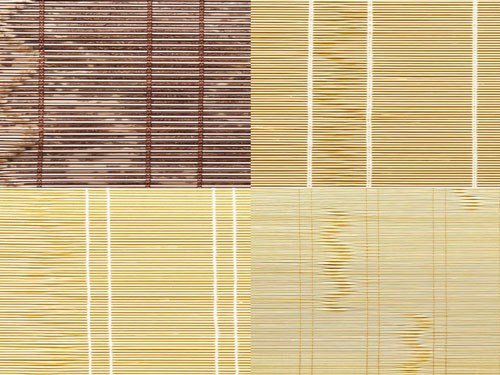
Two types are available – one with a maximum width of 980 mm, and one with a maximum width of 2,400 mm.
Decoration types
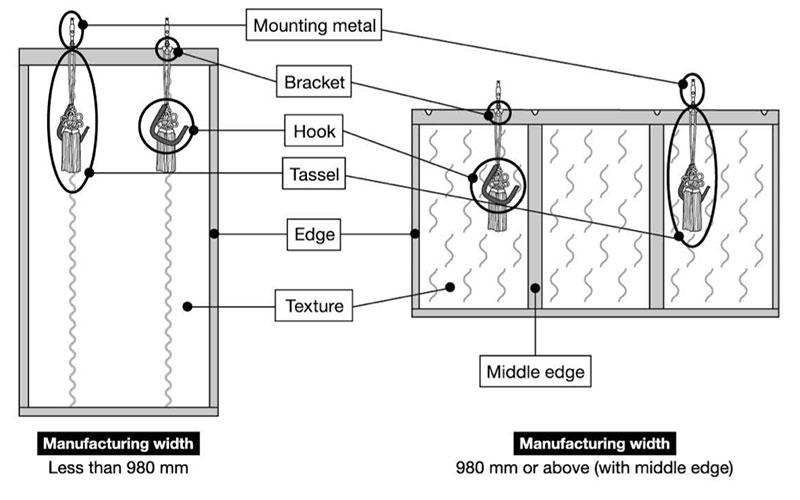
Based on the needs of each customer, customized orders of mounting metal, brackets, hooks, tassels and edges are possible. A middle edge is necessary for products with a width of 980 mm or greater.
Traditionally-produced material types
(Bamboo Node design)
Maximum width: 950 mm
101 Yahime
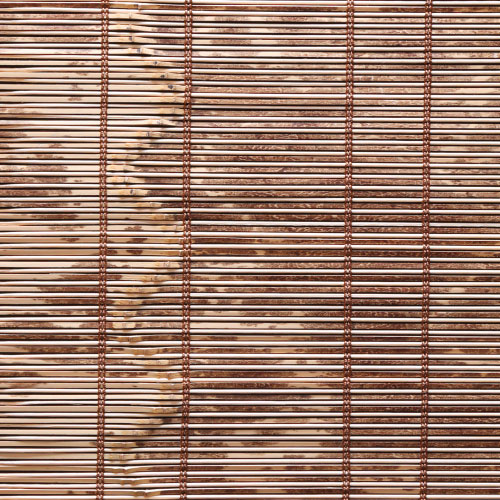
This sudare material is made from Leopard bamboo, a rare type of bamboo that naturally has a cloud pattern on it. To make it possible to weave in the cloud pattern afterwards in the desired order, the artisan uses a knife to manually make cuts around the periphery of the bamboo in the desired order. Madake bamboo that does not have such a pattern is woven in alternately with the Leopard bamboo. This masterpiece of traditional craftsmanship is very difficult to produce, using a technique called “twisted weaving” in which dense “Yosefu” created by using two warps for each row is twisted and woven into each thin bamboo strip. The Bamboo Node exhibit a “plover on wave” pattern. The “plover on wave” pattern is said to be a talisman that brings “marital happiness” and “luck for victory” because it symbolizes “overcoming rough waves.”
Materials: bamboo, weaving yarn: silk (brown)
Materials: bamboo, weaving yarn: silk (brown)
102 Shin-Yahime
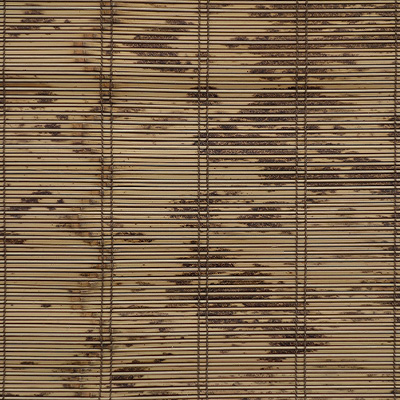
This blind material is made from rare bamboo, with the distance between two warp threads approximately 6 mm. Each bamboo strip is woven on a foot loom to reproduce the cloud pattern inherent to the material. The fabric is packed with the skills of a weaver, using the bamboo nodes to create a houndstooth pattern.
Materials:bamboo,weaving yarn:cotton(brown)
Materials:bamboo,weaving yarn:cotton(brown)
321 Shin-Hakubai
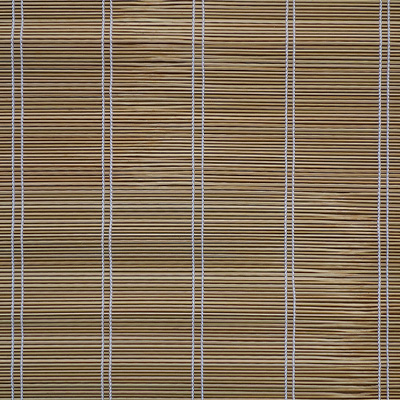
This material is made by weaving bamboo strips, with the skin thinly peeled off, alternately on the front and back. By turning it over by hand, it becomes a very uniform fabric. It is made using a technique called “twisted weaving” in which “purple fabric”, which is made by tying warp threads spaced about 6mm apart, to each individual bamboo strip on a foot loom. The bamboo nodes form a wave pattern. The continuous waves are considered lucky charms, representing wishes for “eternity” and “longevity”.
Material: Bamboo, Weaving thread: Cotton (white)
Material: Bamboo, Weaving thread: Cotton (white)
340BR Kikuka
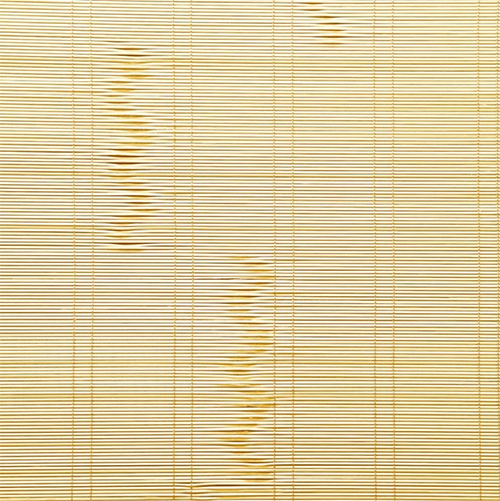
This material is created by alternately weaving the front and back of thin bamboo strips of bamboo bark. By manually flipping over the strips, a very even material can be created. It is produced using a technique called “twisted weaving” in which “Shibifu” created by matching the warp at approximately 12 mm intervals is twisted and woven into each thin bamboo strip using a foot loom. The Bamboo Node exhibit a “plover on wave” pattern. The “plover on wave” pattern is said to be a talisman that brings “marital happiness” and “luck for victory” because it symbolizes “overcoming rough waves.”Materials: bamboo, weaving yarn: cotton (brown)
500S Kyoan
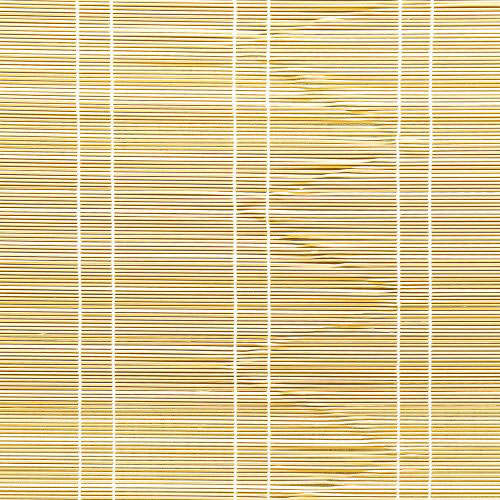
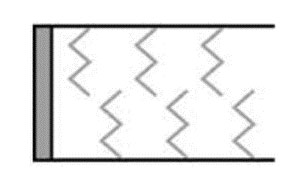
This material is created by alternately weaving the front and back of thin bamboo strips of bamboo bark. By manually flipping over the strips, a very even tapestry can be created. The Bamboo Node are shifted by the artisan’s hands to create a “lightning” pattern. Because when “lightning” appears, “rain” falls and crops grow well, this pattern has the meaning of “abundant harvest (good luck)”.
Materials: bamboo, weaving yarn: cotton (white)
Materials: bamboo, weaving yarn: cotton (white)
500W Kyoan
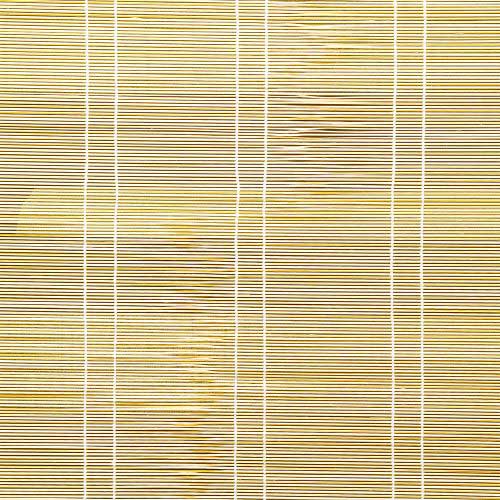
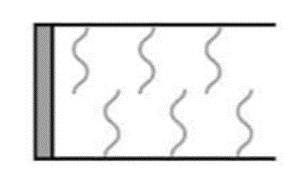
This material is created by alternately weaving the front and back of thin bamboo strips of bamboo bark. By manually flipping over the strips, a very even tapestry can be created. The Bamboo Node are shifted by the artisan’s hands to create a “wave” pattern. Continuous waves are a talisman representing the wish for “perpetuity” and “long life.”
Materials: bamboo, weaving yarn: cotton (white)
Materials: bamboo, weaving yarn: cotton (white)
600A Shinbutsuzen
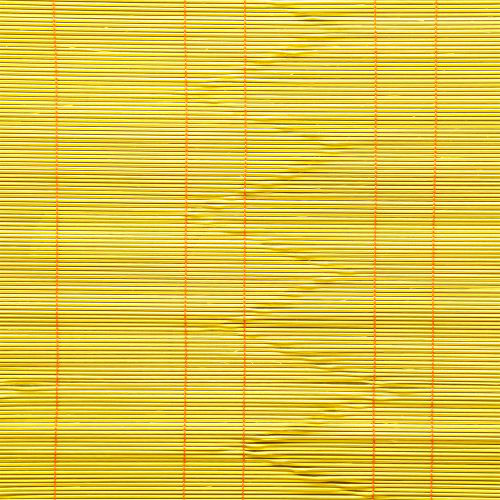
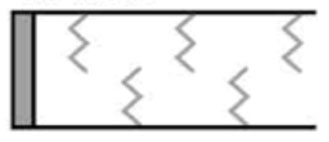
This material is created by alternately weaving the front and back of thin bamboo strips of bamboo bark. By manually flipping over the strips, a very even tapestry can be created. The Bamboo Node are shifted by the artisan’s hands to create a “lightning” pattern. Because when “lightning” appears, “rain” falls and crops grow well, this pattern has the meaning of “abundant harvest (good luck)”. The appearance of ears of rice plants is also expressed with the “golden color”.
Materials: bamboo, weaving yarn: cotton (red)
Materials: bamboo, weaving yarn: cotton (red)
600B Shinbutsuzen
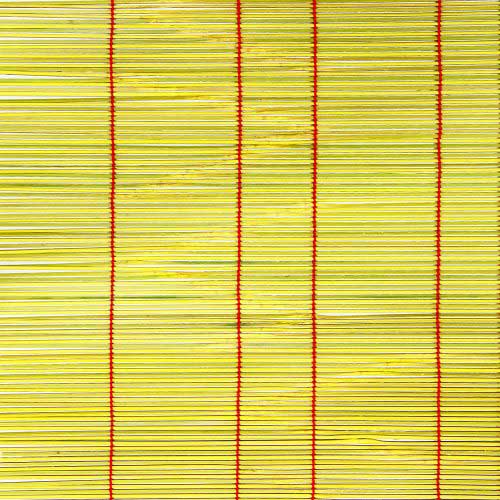
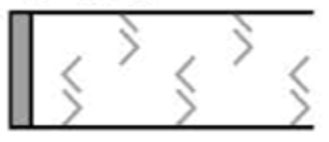
This material is created by alternately weaving the front and back of thin bamboo strips of bamboo bark. By manually flipping over the strips, a very even tapestry can be created. The Bamboo Node are shifted by the artisan’s hands to create a “lightning” pattern. Because when “lightning” appears, “rain” falls and crops grow well, this pattern has the meaning of “abundant harvest (good luck)”. The appearance of ears of rice plants is also expressed with the “golden color”.
Materials: bamboo, weaving yarn: cotton (red)
Materials: bamboo, weaving yarn: cotton (red)
Kyoan 500W&S meets M2 flame-resistance standards in France and can also be used as an interior decoration material in commercial facilities, etc.
SHIKADA WOVEN
+
Traditional Decoration Option
+
Mechanism Option “KC”

Sudare materials shown in the MANYO Catalogue can be made with the options of traditional decorations as well as with the Mechanism Option KC only. Globally, only SHIKADA WOVEN offers the option of adding a screen blind mechanism to authentic woven products.
Offer of commerce
For customers who wish to trade with us and order Shikada products




